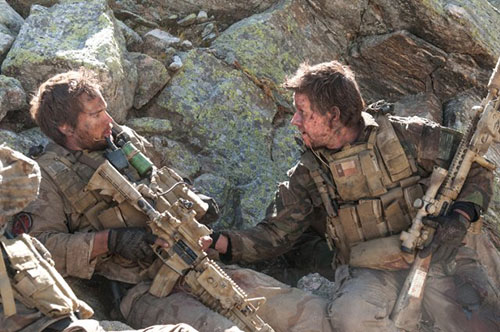Review: Lone Survivor
 In 2005, four members of a Navy SEAL team were assigned to a reconnaissance mission in the Hindu Kush mountain region of Afghanistan as part of Operation Red Wings. Their goal was to gather intelligence about Taliban movements in the area, but unfortunately the mission was compromised when the team was discovered and then outnumbered by over 200 Taliban fighters. In the subsequent rescue mission to extract the team, 16 Special Forces personnel, including eight SEALs, were killed when their helicopter was shot down by the Taliban fighters. It was the largest single-day loss of life in SEAL history.
In 2005, four members of a Navy SEAL team were assigned to a reconnaissance mission in the Hindu Kush mountain region of Afghanistan as part of Operation Red Wings. Their goal was to gather intelligence about Taliban movements in the area, but unfortunately the mission was compromised when the team was discovered and then outnumbered by over 200 Taliban fighters. In the subsequent rescue mission to extract the team, 16 Special Forces personnel, including eight SEALs, were killed when their helicopter was shot down by the Taliban fighters. It was the largest single-day loss of life in SEAL history.
Native Texan and Petty Officer Marcus Luttrell was the only team member to survive enemy contact that day, and his book documenting the event is the basis of the action drama Lone Survivor. Director Peter Berg has painstakingly captured an ultra-realistic vision of what that day must have been like for the brave men who endured the brutal elements of a mountainous region while wounded by enemy bullets. Most importantly, he has captured the brotherhood between the men who push their bodies to almost superhuman strength and endurance to succeed and survive at all costs while adhering to the rules of engagement.
In Lone Survivor, Mark Wahlberg portrays Luttrell, whose team is led by Michael Murphy (Taylor Kitsch) and includes fellow servicemen Matt "Axe" Axelson (Ben Foster) and Danny Dietz (Emile Hirsch). The overall mission is to capture or kill the notorious Taliban leader Ahmad Shah (Yousuf Azami), who is responsible for the death of dozens of U.S. servicemen. While scouting out the village where Shah is based, the mission is compromised when the team is discovered by several goat herders.
The team quickly subdues the civilians, but is then faced with the decision of whether to release them, leave them tied up to face the elements (along with wild animals), or eliminate them. Commanding Officer Murphy decides to release them, and the SEAL team must evade capture and get to an extraction point before the Taliban fighters can get to them. Unfortunately due to communication issues and a series of missteps back at base, the team must fight their way through and out of the mountainous region that Taliban members are intimately familiar with.
The ensuing firefight between the team and the fighters takes up a greater part of Lone Survivor, but the dynamic sequences are presented in such a realistic manner that viewers will feel almost too entrenched in the action. Interestingly enough, the most brutal scenes are not of the wounds from the gunshots themselves, but rather the effect upon the team as they must escape over cliffs -- by literally throwing themselves off. The sequence is far from the typical Hollywood fall, as we see and hear bodies hit and crunch against rocks and trees.
The cinematography of Lone Survivor is best described as cinema verite, thanks to the establishing opening credits sequence that includes actual Navy SEAL training videos and segues into handheld closely shot sequences. The special effects by seasoned veteran Greg Nicotero are remarkably realistic, as are the shooting locations in New Mexico.
Lone Survivor suffers from a few minor technical flaws and a bit of creative license that pulled me out of the moment once or twice, but overall the film is a solid piece of storytelling. In fact, there is at least one instance where I thought a scene seemed a bit unrealistic -- how quickly the Taliban fighters catch up to the team during their escape -- but that question is quickly addressed by one of the characters.
The acting and character development in Lone Survivor are quite impressive. Wahlberg could have easily overshadowed his fellow cast members, but instead his understated performance balances out quite well to establish the brotherhood between these brave men. I highly recommend seeing Lone Survivor, especially for any fans of military dramas like Band of Brothers.

